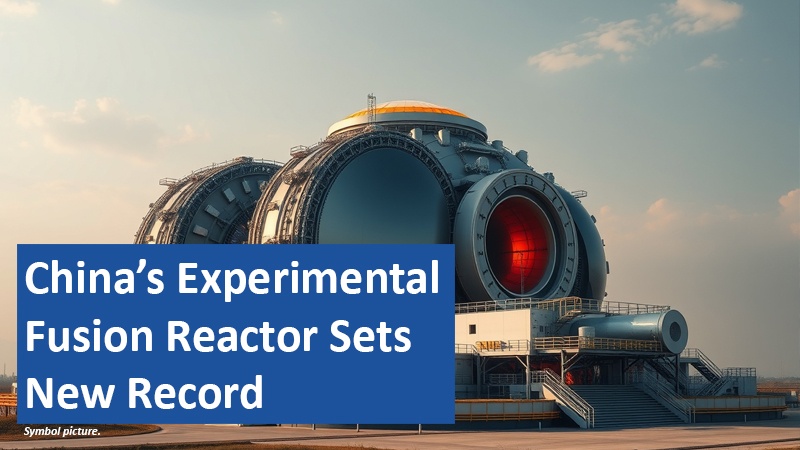
A major breakthrough in fusion research: China’s EAST reactor has achieved a new milestone by sustaining plasma at 100 million degrees Celsius for 1,066 seconds. This achievement marks a significant step toward harnessing nuclear fusion as a limitless energy source. Experts see this as a major advancement on the path to commercial fusion, which could one day replace fossil fuels.
Discover the best deals on Amazon now!
The Science Behind Fusion Energy
Nuclear fusion is considered one of the most promising technologies for future energy production. Unlike nuclear fission, where heavy atomic nuclei are split, fusion combines light atomic nuclei, such as deuterium and tritium, to form helium. This process releases enormous amounts of energy, mimicking the reactions that power the sun. One of fusion’s biggest advantages is its potential to provide an almost limitless and environmentally friendly energy source, as its fuel is abundantly available and does not produce greenhouse gas emissions.
However, sustaining the extreme temperatures—exceeding 100 million degrees Celsius—needed for nuclear fusion remains a major challenge. Various reactor designs, including tokamaks and stellarators, are currently being researched. International projects like ITER in France and Wendelstein 7-X in Germany are making progress, but commercial fusion energy is still projected to be decades away.
EAST’s Record-Breaking Achievement
On January 20, 2025, China’s Experimental Advanced Superconducting Tokamak (EAST) reached a groundbreaking milestone in fusion research. The reactor successfully sustained plasma in high-confinement mode (H-mode) for 1,066 seconds—nearly 18 minutes. This achievement surpasses the previous record of 403 seconds set in 2023, setting a new world record for sustained plasma confinement.
This breakthrough was made possible by significant technological upgrades, particularly enhancements to the reactor’s heating system, which doubled its energy output. Song Yuntao, Director of the Institute of Plasma Physics at the Chinese Academy of Sciences, emphasized the importance of this progress: “A fusion reactor must operate stably in this high-efficiency mode for thousands of seconds to enable future electricity generation.”
The insights gained from this experiment will advance China’s national fusion program and contribute to international projects like ITER, in which China is a key participant.
Implications for Global Fusion Research
EAST’s record-breaking performance demonstrates that plasma can be maintained under controlled conditions for extended periods—an essential requirement for future fusion power plants. Achieving such long-term stability is crucial, as commercial fusion reactors must sustain continuous energy production to be economically viable. The data collected from this experiment will provide valuable insights into plasma behavior and optimization strategies for future reactors.
Moreover, EAST’s success has broader implications for international fusion projects. Its results will help address challenges related to material durability and heat management, two key factors in developing next-generation reactors. The knowledge gained from EAST could accelerate the development of more efficient and stable fusion systems, bringing the world closer to the goal of practical fusion energy.
The Future of Fusion Energy
EAST’s latest breakthrough paves the way for future research aimed at improving the stability and efficiency of fusion plasmas. Scientists are now focusing on increasing plasma temperatures beyond 100 million degrees Celsius and extending confinement times to demonstrate the feasibility of continuous fusion operation. These efforts are critical in overcoming the technical challenges associated with long-duration fusion reactions.
In addition to EAST, China is advancing its China Fusion Engineering Test Reactor (CFETR) project, designed to bridge the gap between experimental reactors and commercial fusion power plants. With a planned output of up to 1 gigawatt, CFETR aims to prove the viability of large-scale electricity generation through fusion. Its first phase is expected to begin in the 2030s, with commercial fusion plants targeted for operation by 2050.
If fusion technology continues to advance at this pace, could we see commercial fusion power sooner than expected? How might breakthroughs like EAST impact the future of global energy production?
Based on content from www.forschung-und-wissen.de and own research.